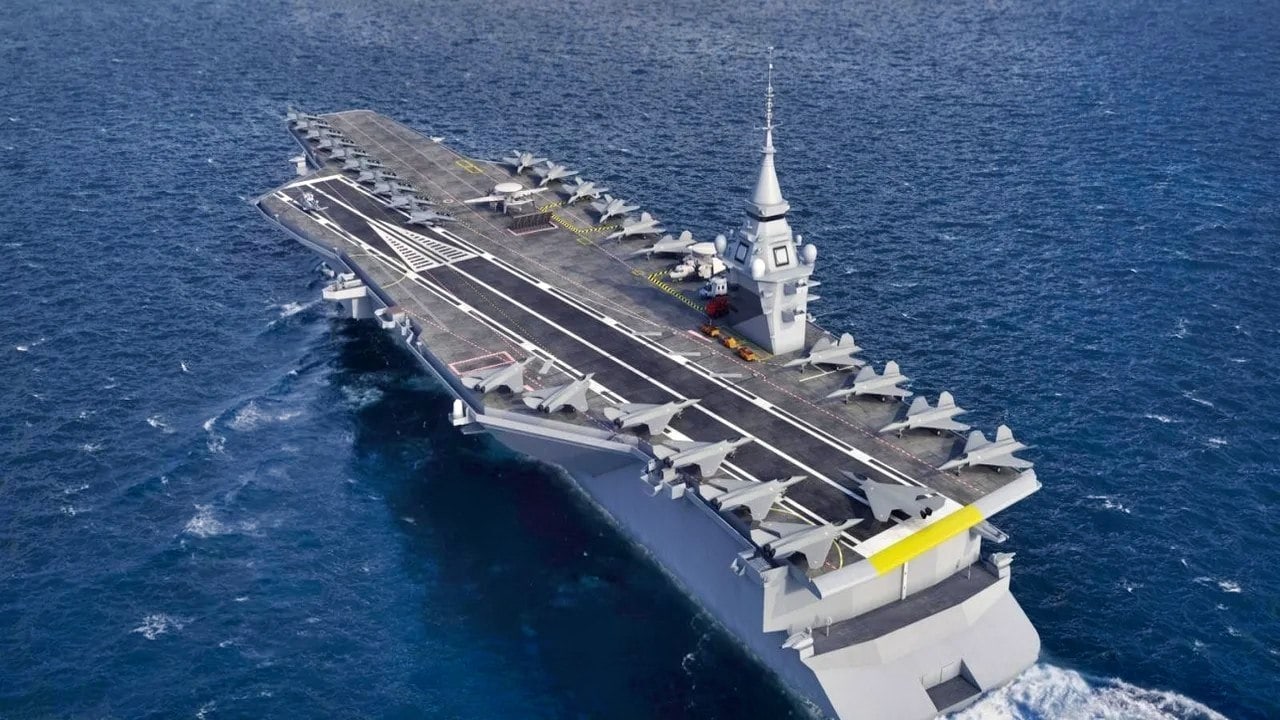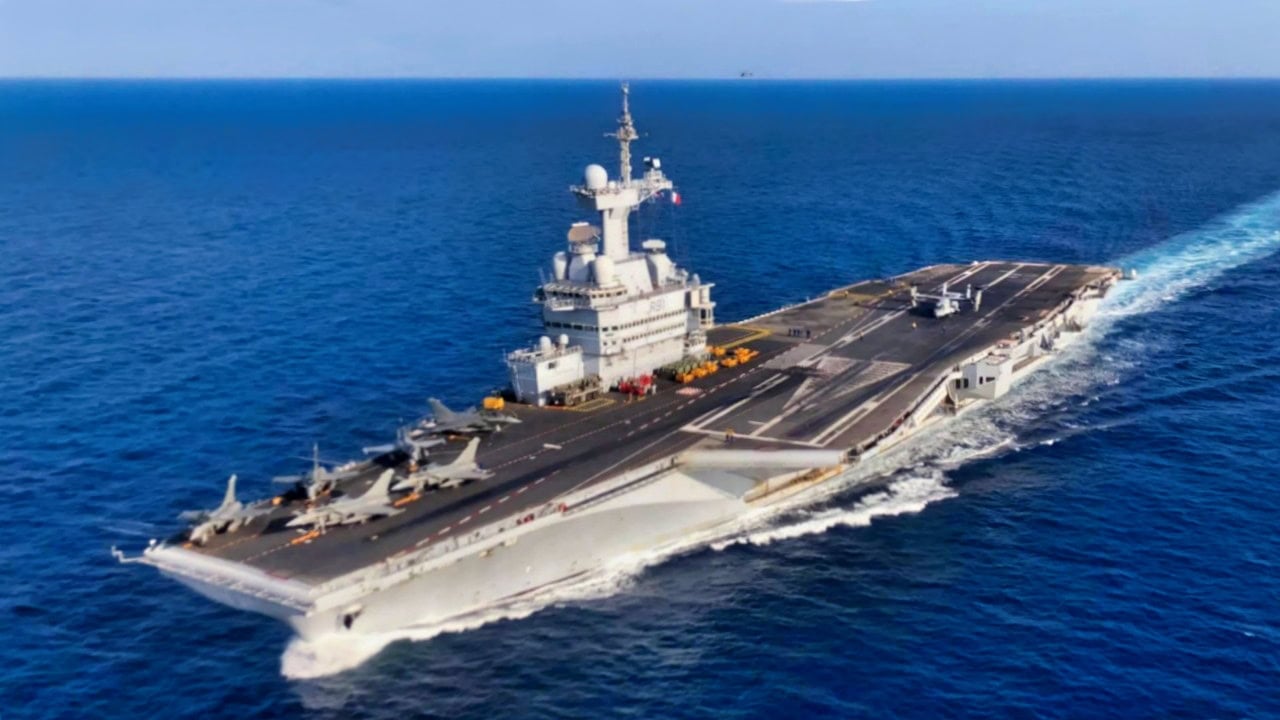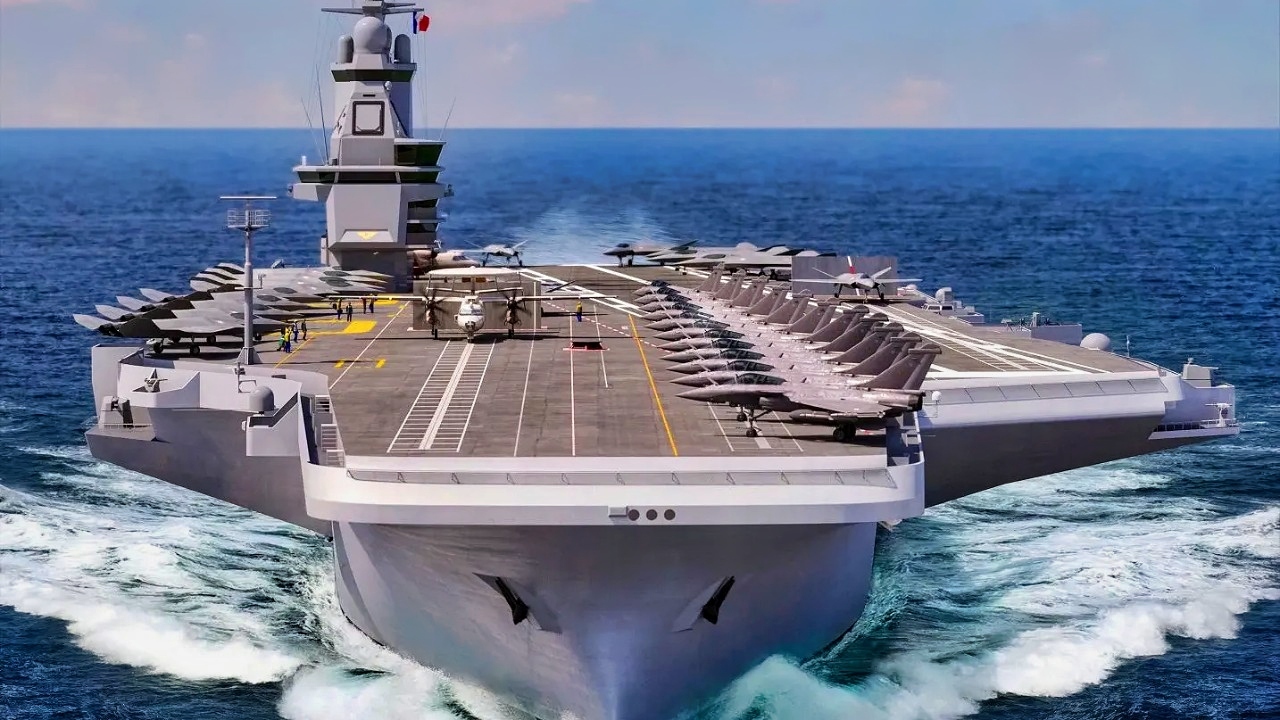Key Points – France’s commitment to its next-generation aircraft carrier (PA-Ng), slated for 2038 service with construction beginning around 2031, is crucial despite its expense, especially given the current European security landscape.
-The primary justification is maintaining France’s independent sea-based nuclear deterrent (Force Aéronavale Nucléaire – FANu) in response to Russian threats.

PA-Ng Aircraft Carrier from France. Image Credit: French Navy.
-The PA-NG will also operate future European sixth-generation fighters and feature advanced EMALS/AAG launch systems.
-Furthermore, abandoning carrier aviation is an almost irreversible loss of capability, vital for France’s NATO obligations and its ability to project power globally, a need underscored since the US “pivot to Asia.”
PA-Ng: Why France Needs a New Aircraft Carrier
Several months ago, we examined the proposed Porte-avions de nouvelle génération (PA-Ng), or “new generation aircraft carrier” – the new supercarrier to be acquired and put into service with France’s Marine Nationale in 2038.
Fabrication of some of the first components of the ship was to begin this year, but actual construction of the vessel would probably only commence in 2031.
Given the scale of the effort to build this ship and the limitations of having only one carrier the question is if it is worth the expense for France’s overall national security requirements.
It is not so much a question of whether the price is too high, but more an issue of with a rising threat from Russian President Vladimir Putin’s apparent desire wage war on all of Europe is it a critical capacity for the French military or is it too much to keep operating in terms of opportunity cost.
Would it make more sense under these circumstances for France to go the way of Canada, Australia, Brazil and others: nations that used to have aircraft carriers but no longer do for various reasons, is the big question.
Interestingly, the aircraft carrier once operated by the Marinha do Brasil, the NAe São Paulo, started out in the French fleet as the Foch, a Clemenceau-class carrier built in the 1960s. It was sold to Brazil and commissioned into service in 2000, but then later decommissioned in 2018.
Brazil now plans to acquire a new carrier by 2040.
Leaving Europe and the Pivot to Asia
The question of how critical is France’s requirement to even have a carrier begins to be answered by decisions taken during the Obama years. The then-US president famously derided his 2012 election opponent, Republican former Massachusetts Gov. Mitt Romney’s claim that Russia was still America’s greatest geopolitical threat.
“The 1980s are calling and asking for their foreign policy back,” was his frivolous reply during a presidential campaign debate.
In line with his policy of non-confrontation with Russia, Obama made a “pivot to Asia” with America’s military power as the rationale for withdrawing significant US military assets from Europe. This put France and the UK’s Royal Navy – and the three carriers between then – now solely responsible for holding the Greenland-Iceland-Scotland gap in the Atlantic, as well as the transatlantic sea routes.
Even under the conditions of those times, France would have needed a carrier just in order to fulfil its NATO obligations, as well as the nation’s interests in remaining a sea power with a global and beyond the European and Mediterranean region reach.
France’s Requirement for PA-Ng
But the Russian invasion of Ukraine has made the presence of a French carrier all the more important to NATO and its other regional partners and has rendered any arguments about its utility academic at this point..
The first and foremost justification for France’s carrier would be the never-ending threats by Moscow to conduct nuclear strikes on the West. In response France must have the ability to launch carrier-based aircraft armed with tactical nuclear weapons – the Force Aéronavale Nucléaire (FANu). For the CDG this comprises a strike package of up to 22 Rafale jets and an E-2C Hawkeye. The size of that force will most likely be expanded aboard the PA-Ng.

PA-Ng Aircraft Carrier. Image Credit: Creative Commons.
A new carrier is also required in order that there would be a platform that could deploy not only the present-day Rafale M, as well as a carrier-capable variant of whatever next-generation fighter aircraft emerges from the joint European programs currently under development.
The PA-NG will also be the first carrier in the Marine Nationale to be equipped with an electromagnetic aircraft launching system (EMALS) and the accompanying new technology advanced arresting gear (AAG), which is a significant leap in performance over the current Charles de Gaulle carrier’s old-style steam catapult.
But perhaps the most important reason that France hangs on to her aircraft carrier capability is that once you delete carrier aviation from your armed forces, you can almost never reconstitute it, says a long-time US naval contractor and shipbuilder.
“None of those nations that gave up their carriers are ever getting them back,” he said. “It just requires to many resources to do that once you have re-set your carrier force back to zero. The Brazilians said that they are going to try, and I wish them all the luck in the world, but the odds are not in their favor.”

U.S. 5TH FLEET AREA OF OPERATIONS (April 24, 2019) A U.S. Marine MV-22 Osprey assigned to the 22nd Marine Expeditionary Unit sits on the flight deck of France’s Marine Nationale aircraft carrier FS Charles De Gaulle (R 91). This was the second time that Ospreys have landed aboard the French vessel. Marines and Sailors assigned to the 22nd MEU and Kearsarge Amphibious Ready Group are currently deployed to the U.S. 5th Fleet area of operations in support of naval operations to ensure maritime stability and security in the Central region, connecting the Mediterranean and the Pacific through the western Indian Ocean and three strategic choke points. (U.S. Marine Corps photo by Maj. Joshua Smith/Released)
About the Author
Reuben F. Johnson is a survivor of the February 2022 Russian invasion of Ukraine and is an Expert on Foreign Military Affairs with the Fundacja im. Kazimierza Pułaskiego in Warsaw. He has been a consultant to the Pentagon, several NATO governments and the Australian government in the fields of defense technology and weapon systems design. Over the past 30 years he has resided in and reported from Russia, Ukraine, Poland, Brazil, the People’s Republic of China and Australia.
